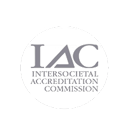Peripheral artery disease – A common and costly vascular issue
Sunday, November 22, 2020
Much like many other common diseases, peripheral artery disease (PAD) shows no favorites among patients and can affect anyone and everyone. In fact, statistics from the American Heart Association (AHA) estimate that PAD affects over 8.5 million Americans and over 200 million people nationwide (not including a suspected large number of undiagnosed cases).
As one of the most common vascular diseases, PAD (also known as peripheral vascular disease or PVD) results from a progressive thickening of an artery’s lining caused by a

buildup of plaque, which narrows or blocks blood flow, reducing circulation of the blood to a specific organ or region of the body. This process, atherosclerotic occlusive vascular disease or atherosclerosis, is often called “hardening of the arteries.”
Often, people with PAD may not experience symptoms until the disease is advanced. Almost all symptoms are due to the leg muscles not having enough blood. Typically, people with PAD experience a painful cramping in the hips, thighs or calves with walking, climbing stairs or exercising that is relieved with rest and elevation of the legs.
While the symptoms of PAD can be temporarily alleviated with medication and rest, the cost in terms of disability and medical treatments is enormous. For example, healthcare costs related to PAD are estimated at more than $21 billion annually in the U.S. alone. The costs continue to grow because so many vascular diseases are chronic with frequent complications. Because the vascular system is so complex, diseases can appear anywhere in the body in different forms and often occur along with other diseases such as diabetes or heart disease.
When it comes to recognizing the symptoms of peripheral artery disease, many people only experience symptoms when their PAD reaches an advanced state. At this point, warning signs of PAD could include any of the following:
- Cramping pain that does not go away when you stop exercising
- Decrease in the temperature of your lower leg or foot compared to the rest of your body
- Toe or foot wounds that do not heal or heal very slowly
- Shiny skin that is pale in color, or worse, gangrene in appearance
In addition to knowing the symptoms of peripheral artery disease, there are many risk factors that can cause or advance the development of PAD. The most important to remember are:
- High blood pressure
- Smoking
- Diabetes
- Obesity
- Lack of exercise
- High cholesterol
Along with paying close attention to the signs, symptoms and risk factors of PAD, there are two other areas that also need to be included in one’s potential for developing this vascular disease – age considerations and genetics. Both men and women should strive to remain active after age 60 to stave off the possibility of developing PAD post-menopause, and genetics need to be included as a factor that can also be a cause of poor blood circulation in the legs, a condition which affects about 10 million people in the U.S, many who only become aware of the reason when the condition becomes advanced.
Ultimately, the best way to try to prevent developing PAD is to maintain a healthy, active lifestyle. This includes quitting smoking if you smoke, as well as working to control your blood pressure, cholesterol, and glucose levels. Exercising regularly is also important along with a low-fat, low-cholesterol diet and eating more fruits and vegetables. By making these changes, you can save the health of your legs and life overall.









Thanks to his knowledge and guidance, I experienced significant improvement and, ultimately, complete healing. His approach was thorough, professional, and reassuring, which made the entire process much easier to handle. I truly appreciated how he took the time to explain every step and answer all my questions patiently. Dr. Ikpoko on Youtube didn’t just treat a medical condition; he restored my confidence and quality of life. I feel healthier, happier, and more empowered today because of his dedication. I wholeheartedly recommend Dr. Ikpoko to anyone seeking expert help for oral herpes or similar conditions. Website: https://drikpoko.wixsite.com/herbs Or email: Drikpoko@gmail.com Thank you so much, Dr. Ikpoko, for your outstanding care and for giving me a fresh start! Thursday, November 27, 2025
Last year, hoping for additional support, I decided to try a herbal treatment program from NaturePath Herbal Clinic. Honestly, I was skeptical at first, but within a few months, I began to feel some changes. My fatigue lessened, my digestion felt better, and overall I felt more balanced and healthier. I also regained much of my energy and confidence. It’s been a meaningful experience, and I feel more like myself again.If you or a loved one is dealing with Hepatitis B, you might consider exploring complementary approaches that feel right for you. This was simply my personal experience. You can visit their website or contact them at www.naturepathherbalclinic.com ,
info@naturepathherbalclinic.com Monday, December 8, 2025
Despite my visit to several doctors my health wasn't getting better, all they could say is for me to stay on the treatment. At the verge of giving up, I went to the internet to search for a treatment on my own at least. But I found a cure instead. On the internet, I read a testimony of a lady who had herpes. She shared an e-mail address of the Doctor. Luckily everything seemed to be okay after I took Herbal Medicine. I wish I could say that’s the end of it because I haven't had any symptoms since then. Do not expose yourself to more danger, use a herbal remedy that is safe and effective. If interested, contact Dr Ikpoko via email: drikpoko@gmail.com Whatsapp +2348108298045 https://drikpoko.wixsite.com/herbs You are the best Doctor sir. Wednesday, December 10, 2025